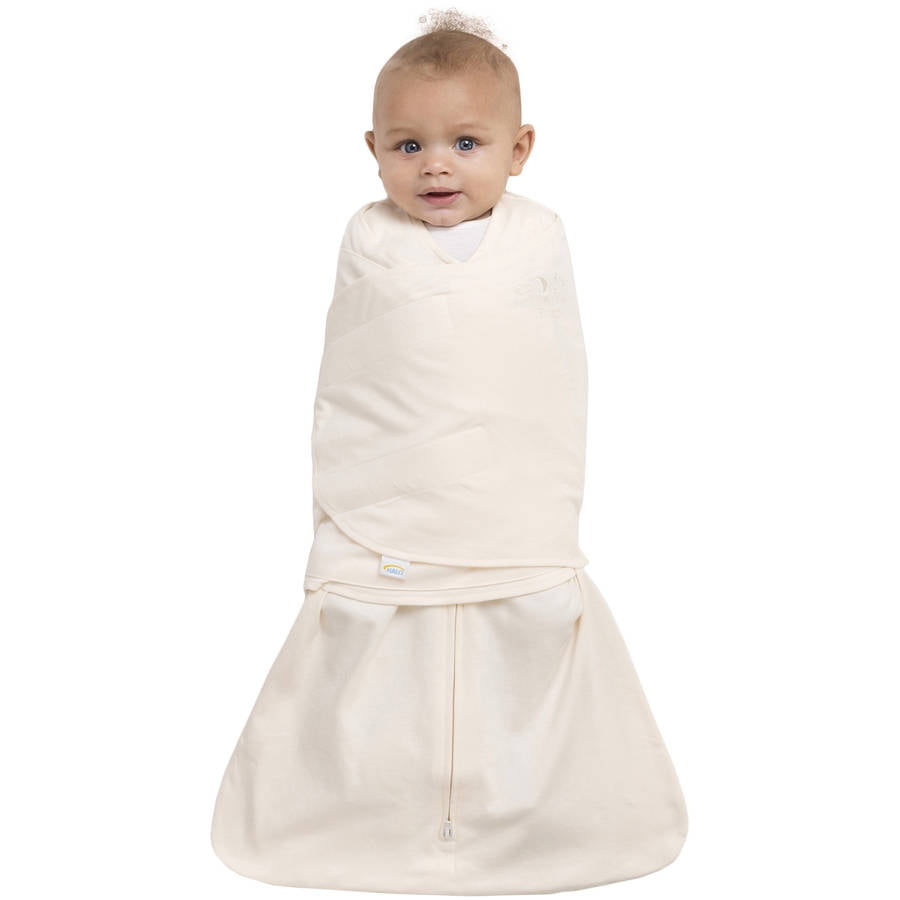

Cotton or bamboo are great choices, since they’re breathable and soft. “Look for a comfortable soft fabric,” says Dr. Material: Sleep sacks are available in a slew of different styles and materials, so make sure you choose one that’s best for the season you’re in. Sleeveless sleep sacks, however, are versatile enough to grow with baby. Some sleep sacks, including those that pin baby’s arms down, are only intended for use until baby can roll over and must be phased out by 4 months at the latest, Dr. Longevity: Make sure to look at the product's age range. (Some models mimic swaddling by giving baby covered sleeves to hold her arms instead.) Like a traditional swaddle, these are not safe to be used once baby can roll herself over - usually around 4 months - unless the design of the bag can convert to keep her arms free. “They are designed to stay snug and not move up over baby’s face,” says Dr.

Swaddle-style sleep sacks, on the other hand, have extra fabric flaps that are secured around her arms to swaddle her. This style can typically be used safely for babies long after they’re able to roll over because her arms are free.

The first, sleeveless sleep sacks, are designed so baby can have her arms out while the rest of her body is contained in a closed sack. Type: There are two main categories of sleep sacks to choose from. Per the guidance of leading experts, four pediatricians, as well as What to Expect staffers and community members, we evaluated and selected the best sleep sacks based on the following criteria: “Have a bunch of them because spit-up will get on them, diapers will soak through them in the middle of the night and you don’t want to be stuck without one.” How we chose the best sleep sacks “I personally love sleep sacks for babies and it is my go-to baby gift for baby showers,” says Elizabeth Murray, D.O., F.A.A.P., a pediatrician at the Golisano Children’s Hospital at the University of Rochester. (The product was inspired by European sleeping bags for babies, which have been used for decades.) Today, the term has become synonymous with wearable blankets.

company to popularize “sleep sacks.” In the early 2000s, the company introduced a product intended to help babies snooze while also reducing the risk of getting tangled up in clothing or loose bedding during the night. “Babies like to feel comfort and security while they’re sleeping,” says Miami-based pediatrician Gary Kramer, M.D. The idea of a sleep sack is the same as a swaddle: to provide security, comfort and a snug feeling for little ones to help them rest easy on their own. If, like me, the idea of swaddling your newborn is daunting, or you’d prefer to have an easy-to-use alternative for middle-of-the-night changes, consider a baby sleep sack instead.


 0 kommentar(er)
0 kommentar(er)
